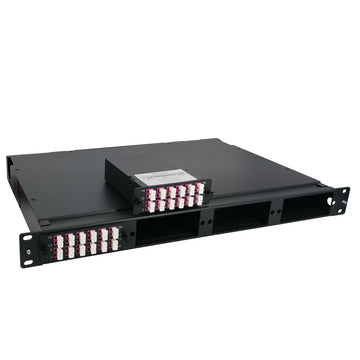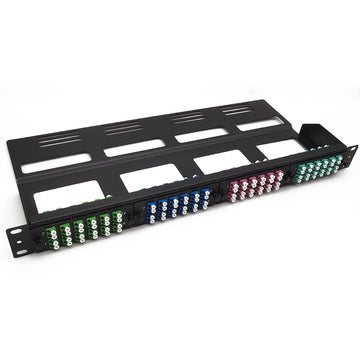Quick View about Armored Fiber Cable
Tired of broken fiber optic patch cords? Micro Armor Fiber Cable is the ideal optical for you, never break a patch cord again!
As is known, armored fiber cable can provide extra protection for fiber optic cable without sacrificing flexibility or functionality within fiber networks, featuring more robust and reliable when encountered with rodents, moisture, and other issues that may cause damage. The armored fiber cable is now optimal for campus & building backbones, data centers, and industrial applications. This article will lead you to know this armored optical cable.
Types of Armored Cable
Armored fiber optic cable can be divided into two types according to the metal tube: interlock armored fiber cable and corrugated armored cable. Interlocking armor is an aluminum armor that is hectically wrapped around the cable and found in indoor and outdoor cables, which offers ruggedness and superior crush resistance. Corrugated armor is a coated steel tape folded around the cable longitudinally, which can be found in outdoor cables and offers extra mechanical and rodent protection. Both armored fiber cables enable installation in the most hazardous areas, including environments with excessive dust, oil, gas, moisture, or even damage-causing rodents.
What is Micro-Armor?
Micro-armor is an extremely lightweight and pliable stainless steel armoring inside the patch cable jacket. It provides the strength and durability of standard aluminum interlocking armor without the bulk.
Compare Micro Armor vs Standard Armored
When to use armored cable?
Micro-armor is ideal for cable runs susceptible to breakage, such as hazardous environments, exposed cable runs, rack wiring, mount wiring and outdoor applications.
Micro-Armor Benefits and Features:
- 3mm overall cable diameter
- 10mm bend-rating
- 100lb armor tensile strength
- 70lb overall pull-rating
- 700lb crush-rating
- Internal helical stainless steel tape surrounded by a layer of aramid and stainless steel mesh

Types of Micro Armored Fiber Optic Cable
As there is a strong metal armored tube inside the armored fiber cable. Therefore, the termination of the armored fiber cable is more difficult than that of standard fiber optic cables. Pre-terminated armored fiber cables have better performances in some outdoor applications, while pre-terminated ones are adopted by many installers for indoor applications considering quality transmission and time-saving factors.
Furthermore, the pre-terminated armored fiber cables provided by the market are mainly armored fiber patch cable and armored fiber trunk cable: the former is stronger and more flexible than the traditional fiber patch cable, while the latter is a length of armored fiber cable with several legs on each end terminated with fiber optic connectors.

Armored Fiber Patch Cord
Armoured Fiber optic cables used in telecommunication are broadly categorized into two types: Multimode and Singlemode fiber cables. The multimode fiber cable is prefixed with 'OM' and the Single-mode fiber cable is prefixed with 'OS'. In ISO/IEC 11801 and EIA/TIA standards five types of Multimode – OM1, OM2, OM3, OM4 & OM5 and two types of Single-mode – OS1 & OS2 fibers are mentioned.
And they come with different Fiber optic cable jacket colors that make it fast and simple to recognize exactly which type of cable you are dealing with. OM1/OM2 comes with an orange color jacket, OM3 fiber comes with an aqua color jacket, OM4 fiber cable comes with a magenta and OM5 comes with a lime green color cable jacket, and yellow color jacket is specify for Singlemode OS1/OS2.

Armored Fiber Trunk Cable
Fiber trunks are pre-terminated cable assemblies connecting switches, servers, patch panels, and zone distribution areas in the data center, or serving as the backbone of enterprise fiber networks.Armored fiber trunk cable are usually categorized by fiber strands: 6 strand OM3 Armored fiber, Singlemode 12 strand armored fiber optic cable and 24 strand single mode armored fiber optic cable.
Breakout Length (Armored Legs)
LightOptics offers customized services for make adjustments to configure armored legs of fiber trunk cable when your network might have different requirements. For example, when installed into an Leviton HDX High Density Patching Frame you might need to use 24-inch breakout lengths.
Labelling
To assist with network manageability, you can choose from standard labeling of cables and breakouts, or customize your labeling for consistency with existing cabling or labeling preferences.
Pulling Eye
The pulling eye protects fiber trunk connectors during installation. It completely covers the breakout length, transferring any pulling force from the assembly to the pulling eye sleeve. During fiber trunk configurations, you can specify which end to have a pulling eye installed.












